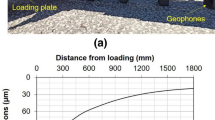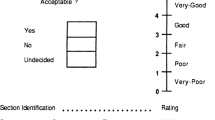Abstract
Pavement data collection is the most expensive and time consuming component of Pavement Management System (PMS). Thus, possible methods of minimizing the need of such data might be critical in reducing pavement condition monitoring costs. Also the ability to relate pavement performance prediction models (frequently roughness based) to hot mix asphalt field performance models (distress based) provides valuable conclusions and input in pavement design, performance assessment, maintenance and rehabilitation strategies. Objective of this study was to examine whether specific distresses can influence roadway profile so as to be able to relate the two. The influence of pavement distresses on road profile has been investigated over the years. However, past studies provided conflicting conclusions. Thus, in this study an alternative approach was considered due to the availability of high quality and detailed distress data collected with the Laser Crack Measurement System (LCMS) of the Automatic Road Analyzer, ARAN. As it was expected, specific distresses have higher impact in longitudinal roughness since they are present on the roadway surface at regular intervals (i.e., specific frequencies). For this reason, instead of using summary indexes (i.e., International Roughness Index (IRI), Pavement Condition Index (PCI)), the Power Spectral Density (PSD) of the roadway profile at specific frequency bandwidths was considered along with distresses. The analysis indicated that a specific subset of distresses is affecting roughness at definite wavelength frequencies. Alligator cracking and rutting standard deviation provided the best correlation. IRI was correlated better with distress (e.g. rutting standard deviation) at lower profile frequencies. At high frequency domain (i.e., below 0.8 m wavelengths) better correlation between IRI and high severity cracking was observed through the PSD. Considering multiple frequencies in the regression models between roughness and distresses, the goodness of fit has not necessarily improved. However, the role of different bandwidths was evident. In addition to the specific results, the methodology presented in this study can be used elsewhere to assess potential relations between pavement roughness and distress components.
Similar content being viewed by others
References
S.A. Dewan, Transforming LTTP Distress Information for Use in MTC-PMS, Improving Pavements with Long-Term Pavement Performance: Products for Today and Tomorrow. FHWA-RD-03-049. Washington DC, USA, 2005.
S.A. Dewan, R.E. Smith, Estimating IRI from Pavement Distresses to Calculate Vehicle Operating Costs for the Cities and Counties of San Francisco Bay Area, Transp. Res. Rec. 1816 (2002) 65–72.
K. Park, N. Thomas, K. Lee, Applicability of the International Roughness Index as a Predictor of Asphalt Pavement Condition, J. Transp. Eng. 133 (12) (2007) 706–709.
S. Arhin, L. Williams, A. Ribbiso, M. F. Anderson, Predicting Pavement Condition Index Using International Roughness Index in a Dense Urban Area, J. Civ. Eng. Res. 5 (1) (2015) 10–17.
R. Vidya, S.M. Santhankumar, S. Mathew, Estimation of IRI from PCI in Construction Work Zones, ACEE Inter. J. on Civ. Environ. Eng. 2 (1) (2013)1–5.
M. Mubaraki, Highway subsurface assessment using pavement surface distress and roughness data, Inter. J. Pave. Res. Technol. 9 (5) (2016) 393–402
S. Arhin, E. Noel, Predicting Pavement Condition Index from International Roughness Index in Washington, DC. No. DDOT-RDT-14-03. Howard University Transportation Research Center, U.S. Department of Transportation, Federal Highway Administration, Washington DC, USA, 2014.
K. Tomiyama, A. Kawamura, Application of lifting wavelet transform for pavement surface monitoring by use of a mobile profilometer, Inter. J. Pave. Res. Technol. 9 (5) (2016) 345–353
J.D. Lin, J.T. Yau, L.H. Hsao, Correlation Analysis Between International Roughness Index (IRI) and Pavement Distress by Neural Network, 82th Transp. Res. Brd. Ann. Meeting, Washington DC, USA, 2003.
American Society for Testing and Materials, Standard Practice for Roads and Parking Lots Pavement Condition Index Surveys. ASTM D6433-11. ASTM International, West Conshohocken, PA, 2011.
T.D. Gillespie, M.W. Sayers, L. Segel, Calibration and Correlation of Response-Type Road Roughness Measuring Systems. National Cooperative Highway Research Program Report 228. University of Michigan, Ann Arbor, Michigan, USA, 1980.
M.W. Sayers, S.M. Karamihas, The Little Book of profiling: Basic Information about measuring and interpreting road profiles. UMTRI, Ann Arbor, Michigan, USA, 1998.
International Organization for Standardization, Mechanical vibration - Road surface profiles - Reporting of measured data. ISO 8608:1995. ISO, Geneva, Switzerland, 1995.
F.G. Praticò, R. Vaiana, T. Iuele, Experimental investigation on surface performance and acoustic absorption, 8th RILEM Inter. Sympos. Test. Character. Sustain. Innov. Bituminous Mater. Springer, Dordrecht, Netherland, 2016, pp. 435–446.
S. Cafiso, S. Taormina, Texture analysis of aggregates for wearing courses in asphalt pavements, Inter. J. Pave. Eng. 8 (1) (2007) 45–54.
J. Bryce, J. Santos, G. Flintsch, S. Katicha, K. McGhee, A. Ferreira, Analysis of rolling resistance models to analyse vehicle fuel consumption as a function of pavement properties, Proc. Inter. Conf. Asphalt Pave. ISAP, Taylor and Francis Group, London, UK, 2014, pp. 263–273.
S. Cafiso, A. Di Graziano, Monitoring and performance of AC pavements reinforced with steel mesh, Inter. J. Pave. Res. Technol. 2 (3) (2009) 1996–6814.
S. Cafiso, C. D’Agostino, E. Delfino, A. Montella, From manual to automatic pavement distress detection and classification, 5th IEEE Inter. Conf. Models Technol. Intelligent Transp. Syst. MT-ITS, 8005711 2017, pp. 433–438.
The Transtec Group, Inc., FHWA, Profile Viewing and AnaLysis, ProVal 3.61.24, Balcones Drive, Austin, Texas, USA, 2017.
STATGRAPHICS® Centurion XVII. Statpoint Technologies, Inc., Virginia, USA, 2014
National Cooperative Highway Research Program, Automated Pavement Condition Surveys. NCHRP Synthesis 531. Transp. Res. Brd. NCHRP, Washington DC, USA, 2019.
G. S. Maddala, Introduction to econometrics, Macmillan Publishing, New York, 1988.
J. F. Hair, W. C. Black, B. J. Babin, R. E. Anderson, Multivariate data analysis. Upper Saddle River, Prentice Hall, NJ, 2009.
Acknowledgements
This work has been partially financed by the University of Catania within the project “Piano della Ricerca Dipartimentale 2016–2018” of the Department of Civil Engineering and Architecture.
Author information
Authors and Affiliations
Corresponding author
Additional information
Peer review under responsibility of Chinese Society of Pavement Engineering.
Rights and permissions
About this article
Cite this article
Cafiso, S., Di Graziano, A., Goulias, D.G. et al. Distress and profile data analysis for condition assessment in pavement management systems. Int. J. Pavement Res. Technol. 12, 527–536 (2019). https://doi.org/10.1007/s42947-019-0063-7
Received:
Revised:
Accepted:
Published:
Issue Date:
DOI: https://doi.org/10.1007/s42947-019-0063-7




